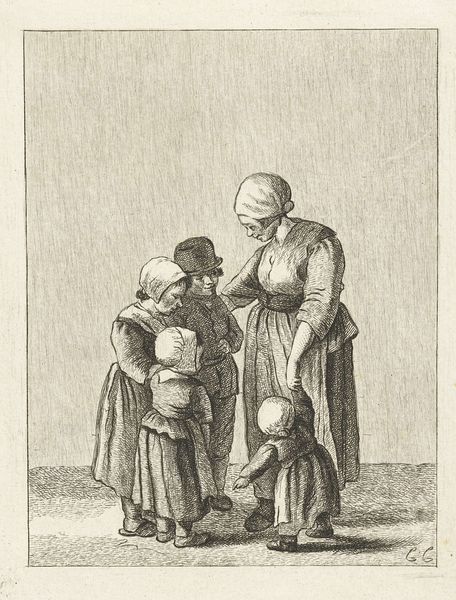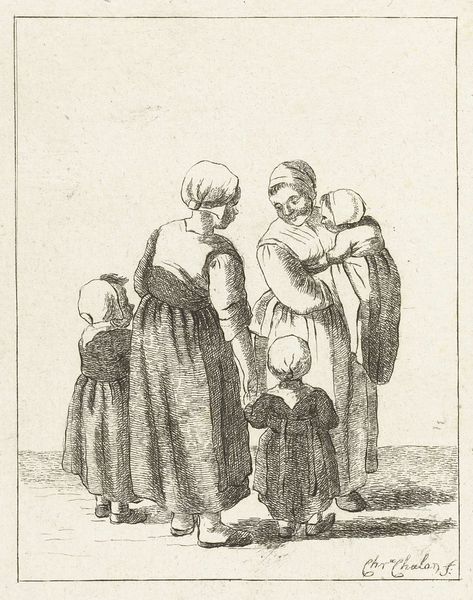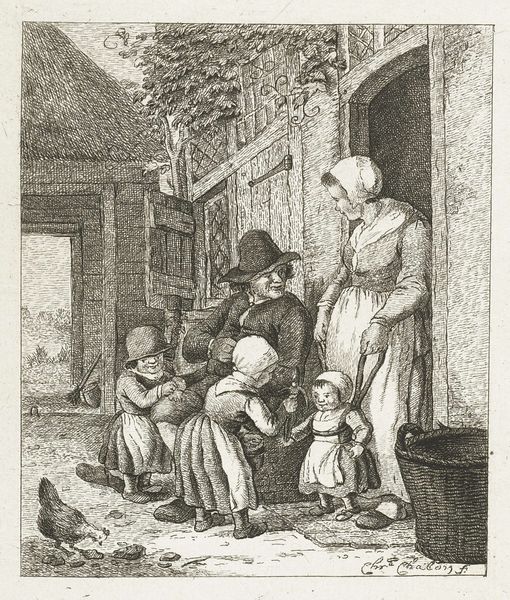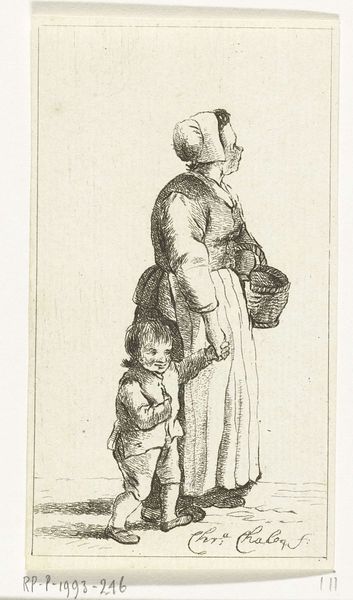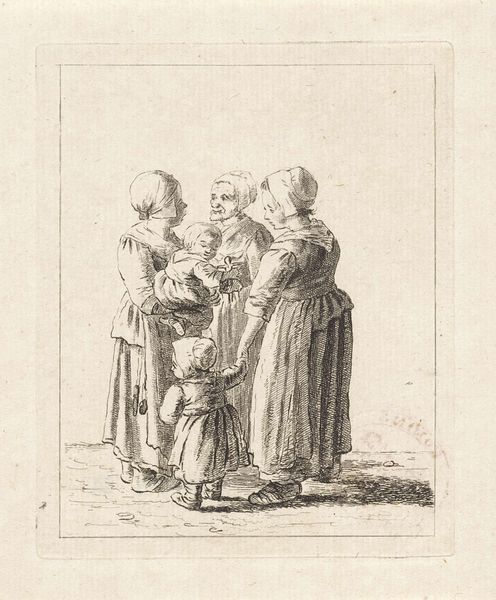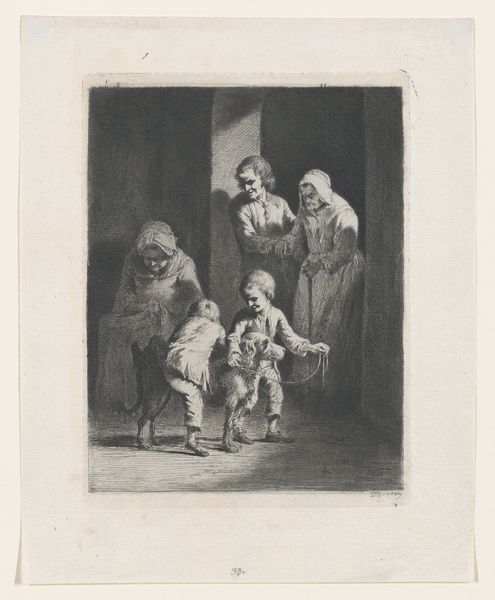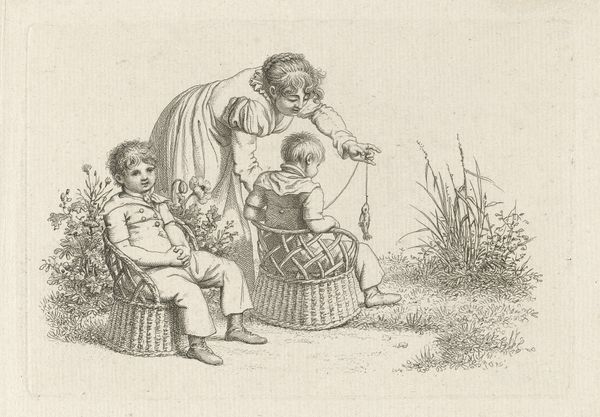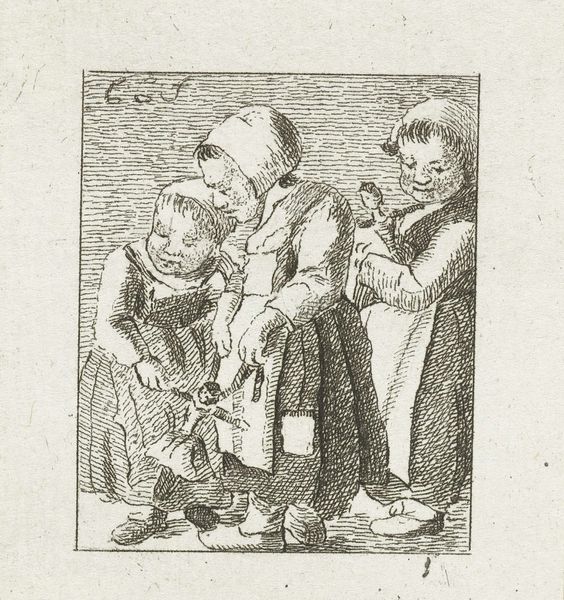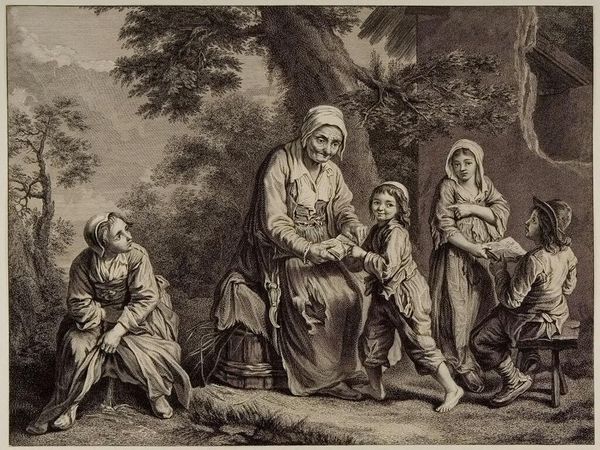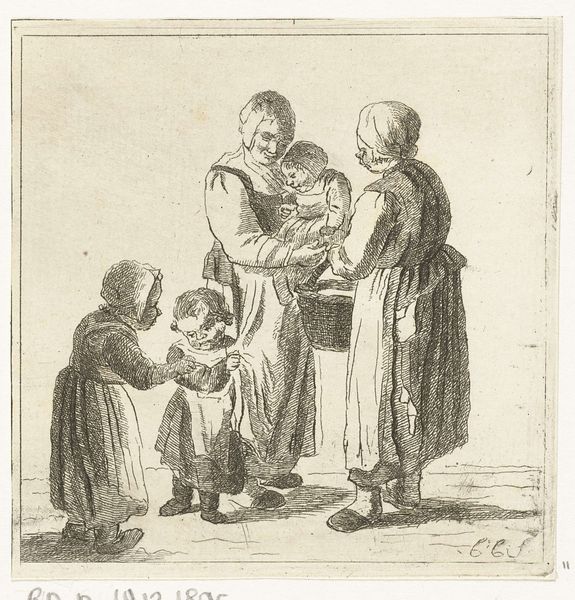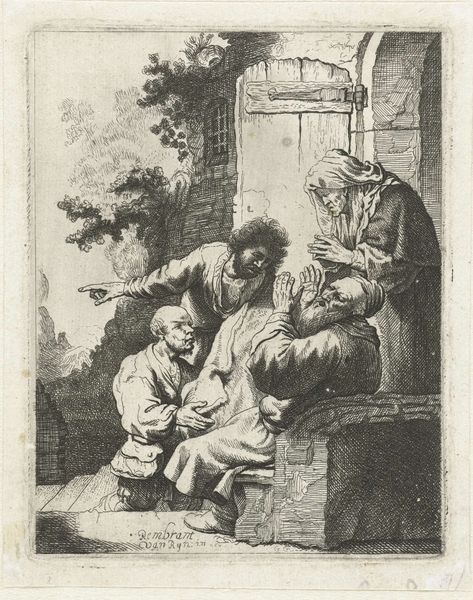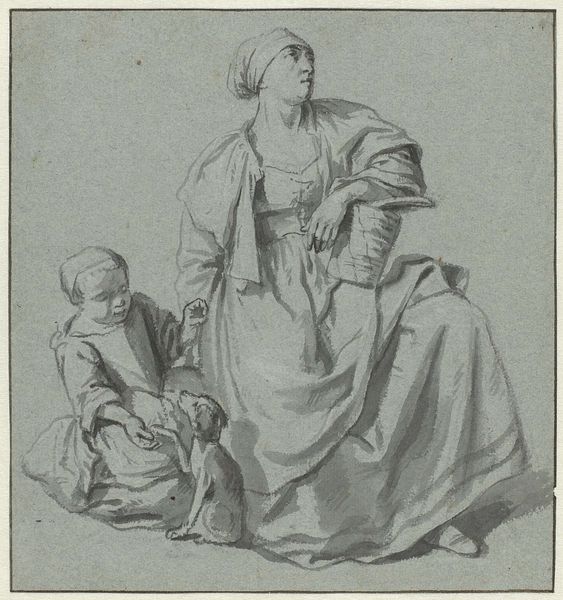
drawing, print, engraving
#
portrait
#
drawing
# print
#
pencil drawing
#
portrait drawing
#
genre-painting
#
engraving
Dimensions: height 146 mm, width 242 mm
Copyright: Rijks Museum: Open Domain
Curator: We’re looking at Jacob Ernst Marcus's "Zittende oude vrouw en twee kinderen" which translates to "Seated old woman and two children". It’s an engraving dating back to 1813. Editor: My first impression is of stillness, almost oppressive. The stark monochrome palette really enhances the sense of weariness etched on their faces. You feel the weight of their situation, especially in the posture of the sleeping woman. Curator: Absolutely. Note the artist’s technical skill in using line and hatching to define form and shadow, it's almost sculptural, particularly in the rendering of the old woman’s draped clothing and weary features. The formal arrangement of figures creates a triangular composition, drawing your eye around the characters in stages. Editor: From a material perspective, the creation of an engraving would involve skilled labor, specialized tools, and printing processes. Paper itself would have been a valuable commodity, and its role in distributing images of working-class figures like this speaks volumes about the dissemination of social commentary at the time. Curator: Interesting point. Consider how the print medium allows for multiple reproductions. Its distribution reaches a wider audience than a unique painting might, allowing for the potential replication of a shared emotional response across different socio-economic levels of Dutch society. Editor: These details – her patched clothing, the bare feet of the boy, and the worn bench are details not typically immortalized in artistic portraiture. They emphasize poverty and lived hardship. Marcus uses art as social commentary by elevating those on the fringes of society, and that’s important to how we understand art production at the time. Curator: Indeed. While not idealized, each figure is treated with dignity. The visual impact transcends mere social documentation, it evokes a palpable empathy. Marcus masterfully manipulated line and form to convey human experience in a complex social fabric. Editor: Looking closely reveals the level of labour involved in image creation, but the subject of the artwork alludes to a whole range of other forms of labour and to class struggle. Overall it’s a potent and compelling representation. Curator: Quite. We begin with lines etched into metal and conclude with lines etched onto faces, each a different method of engraving that tell the human condition in its various states.
Comments
No comments
Be the first to comment and join the conversation on the ultimate creative platform.


